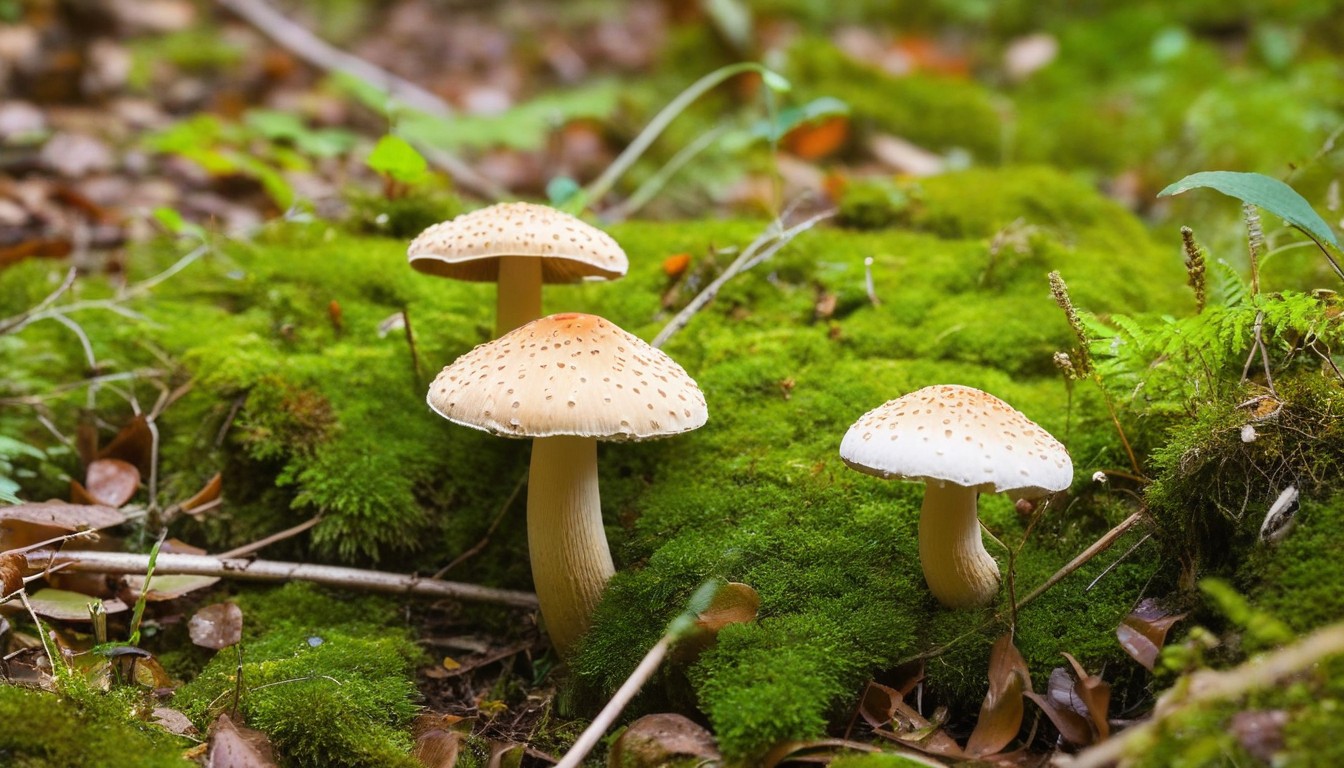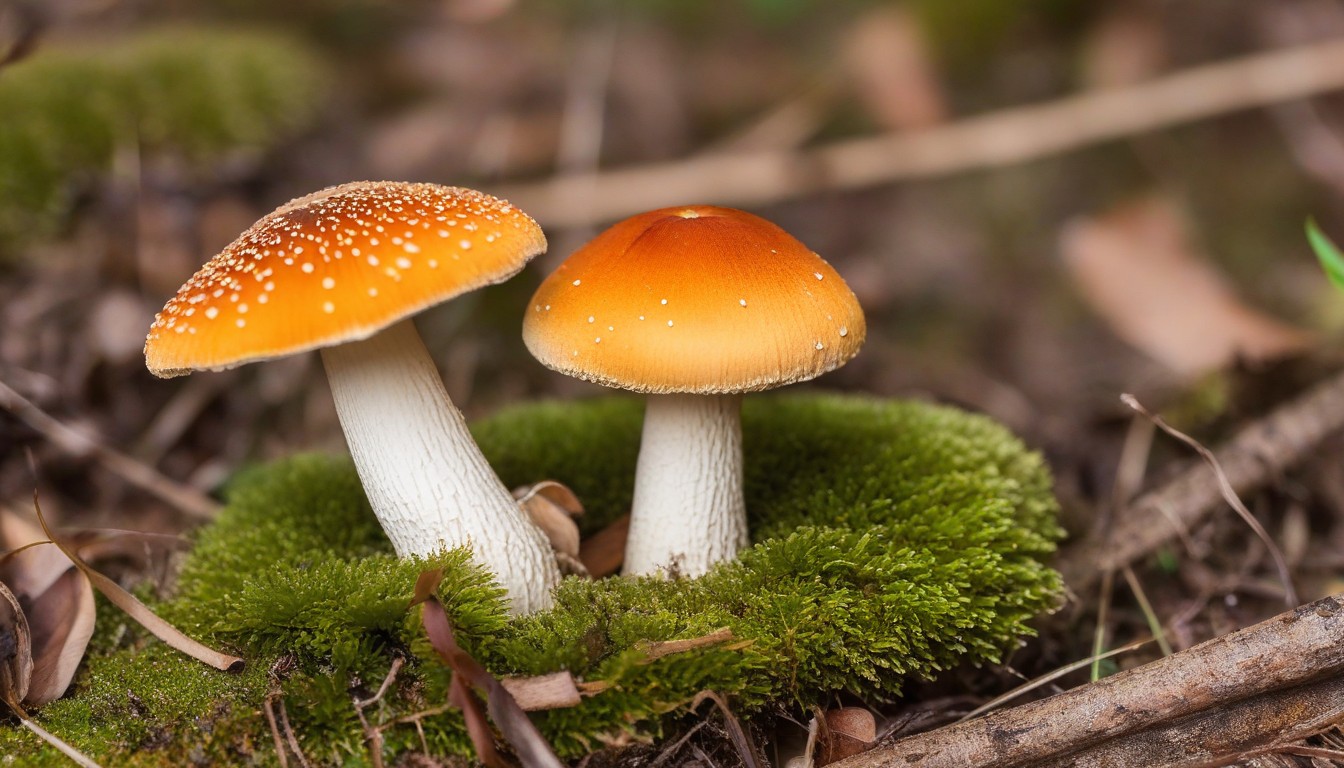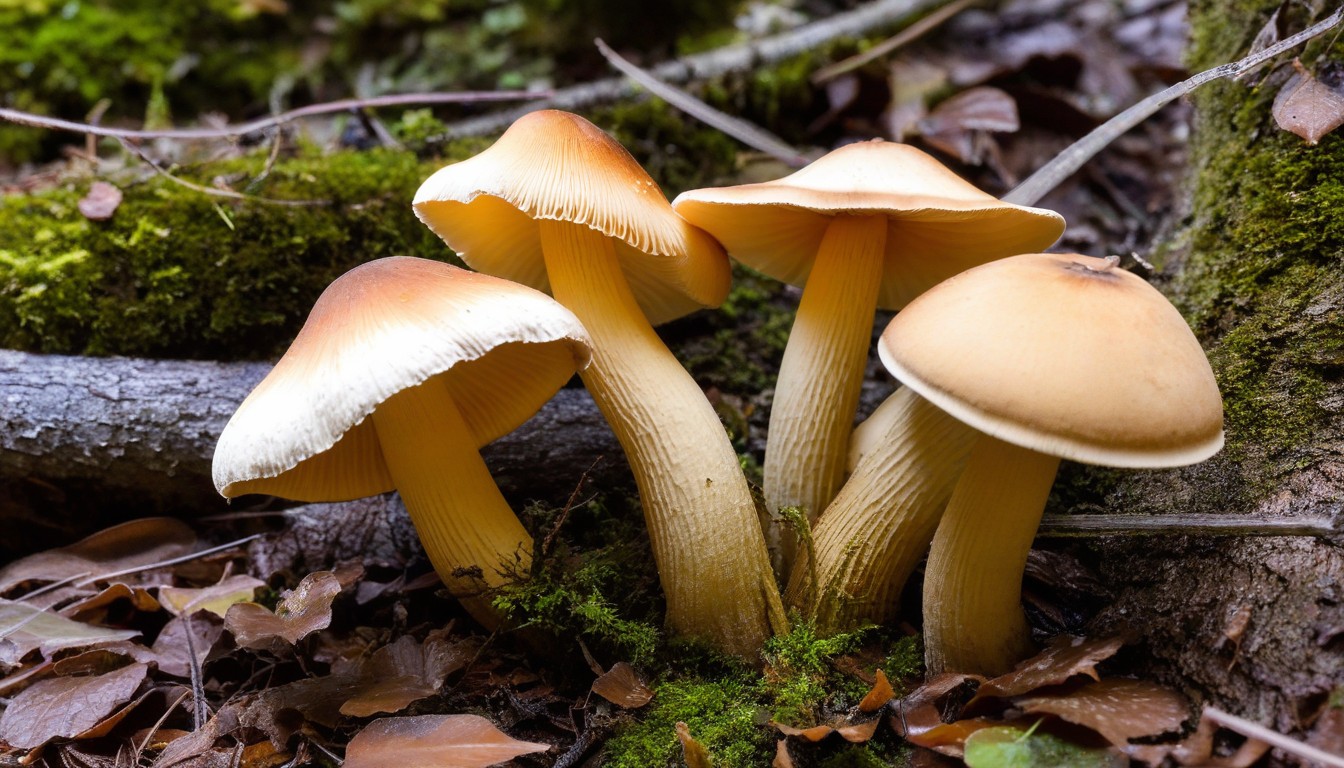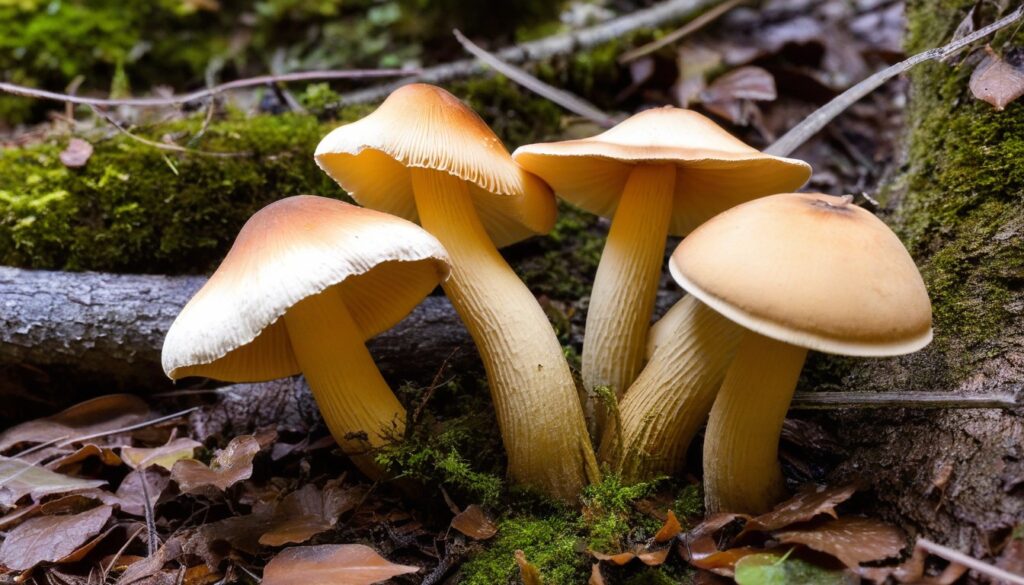Mushrooms are fascinating organisms that have captivated humans for centuries with their unique shapes, colors, and textures. However, some mushrooms can develop abnormal growths that result in deformed shapes and sizes.
Deformed mushrooms refer to fungal growths that deviate from their regular structures due to various factors. In this article, we explore the causes and interesting facts about deformed mushrooms, shedding light on their unique characteristics and their impact on ecosystems.
Key Takeaways
- Deformed mushrooms are abnormal fungal growths that differ from their normal counterparts.
- Multiple factors can contribute to the development of deformed mushrooms, including genetic mutations, environmental conditions, fungal infections, and nutrient deficiencies.
- Understanding the causes of deformed mushrooms can deepen our appreciation for the complexity of the fungal world and its impact on ecosystems.
What Are Deformed Mushrooms?
Deformed mushrooms are abnormal fungal growths that differ from normal mushrooms in various ways. While normal mushrooms have a typical cap-and-stem structure, deformed mushrooms can have distorted caps, stems, or both. In some cases, deformed mushrooms may appear misshapen or stunted, with irregular colors or textures.
The exact causes of deformed mushrooms can vary, but they often result from environmental factors, genetic mutations, fungal infections, or nutrient deficiencies. These factors can disturb the normal growth and development of mushrooms, leading to unique shapes and sizes.
Despite their deformities, many deformed mushrooms are completely harmless and can be consumed safely. However, certain species may contain toxins or other harmful compounds, so it is crucial to identify them correctly before consuming them.
Overall, exploring the world of deformed mushrooms can offer fascinating insight into the complexity and diversity of fungal life.
Common Causes of Deformed Mushrooms
Deformed mushrooms can result from various factors, including genetic mutations, environmental conditions, fungal infections, and nutrient deficiencies.
Genetic Mutations
Genetic mutations are a common cause of deformed mushrooms. These mutations can occur naturally or as a result of exposure to chemicals or radiation. Mutations can affect the growth and development of mushrooms, leading to abnormal shapes, colors, and textures.
Environmental Conditions
The environment can also play a significant role in the development of deformed mushrooms. Factors such as temperature, humidity, light exposure, and soil composition can all impact mushroom growth and development. Suboptimal conditions can lead to deformities in mushrooms, including abnormal shapes and stunted growth.
Fungal Infections
Fungal infections can affect the development of mushrooms, leading to deformities in their appearance and reducing their quality and edibility. Fungal infections can cause changes in the color and texture of mushrooms, and can also interfere with their growth and development.
Nutrient Deficiencies
Proper nutrition is crucial for healthy mushroom growth. Nutrient deficiencies can contribute to the development of deformed mushrooms, particularly if they are lacking in important micronutrients such as zinc or potassium. Inadequate water or nutrients can also lead to stunted growth and deformed shapes.
Genetic Mutations and Deformed Mushrooms

Genetic mutations play a crucial role in causing deformed mushrooms. These abnormalities alter the genetic makeup of the fruiting body, leading to distorted growth. There are specific genetic mutations that researchers have linked to the appearance of deformed mushrooms, such as the protein kinase gene in the mushrooms Pleurotus tuoliensis and Lentinula edodes. Scientists have also found that these mutations can affect the ratio of two types of hyphae in the growing mushroom, leading to differences in texture and shape.
Studies have shown that genetic mutations are a widespread phenomenon in mushroom growth. For example, the yellow oyster mushroom (Pleurotus citrinopileatus) has been found to have numerous genetic errors in its DNA that can affect the shape and color of the fruiting body. The variability in genetic mutations creates a fascinating diversity of mushroom shapes and sizes that add to the unique charm of these fungal organisms.
While genetic mutations can lead to deformed mushrooms with unusual shapes and textures, these mutations also hold potential for scientific research. Scientists have shown interest in studying these genetic abnormalities to understand more about mushroom growth and development. These studies could lead to new insights into the role of genetic mutations in the growth of other organisms and contribute to the advancement of genetic research.
Environmental Factors and Deformed Mushrooms
Environmental factors play a crucial role in the growth and development of mushrooms, including their shape and appearance. Certain conditions can cause deformed mushrooms to form, which can be fascinating to observe and study. Let’s explore some of the environmental factors that can contribute to the formation of deformed mushrooms.
Temperature
The temperature at which mushrooms grow can have a significant impact on their development. If the temperature is too high or too low, it can cause distortions in the mushroom’s cap or stem. For example, if the temperature is too high, the mushroom’s cap may become flattened or wavy. Conversely, if the temperature is too low, the mushroom’s cap may become wrinkled or shriveled.
Humidity
Mushrooms require a certain amount of humidity to grow properly. However, if the humidity is too high or too low, it can cause deformities in the mushroom’s shape. High humidity can cause the cap to become curved or conical, while low humidity can cause the cap to become shriveled or dehydrated.
Light Exposure
The amount and type of light that mushrooms are exposed to can also affect their growth. If mushrooms receive too much or too little light, it can cause the cap to bend or twist, resulting in a deformed appearance.
Soil Composition
The composition of the soil in which mushrooms grow can impact their development. If the soil is too rich in nutrients, it can cause the mushroom to grow too quickly, leading to a misshapen appearance. Conversely, if the soil is deficient in nutrients, the mushroom may not grow to its full potential, resulting in a small or malformed cap.
Overall, environmental factors can have a significant impact on the growth and development of mushrooms, potentially leading to the formation of deformed mushrooms. By understanding these factors, we can gain a deeper appreciation for the complexity and adaptability of these fascinating fungi.
Fungal Infections and Deformed Mushrooms

Fungal infections are one of the most common causes of deformed mushrooms. When a mushroom becomes infected with a fungus, it can lead to abnormal growth patterns, unusual colors, and strange textures. The fungus may take hold in various parts of the mushroom, including the stem, cap, or gills.
One type of fungal infection that often affects mushrooms is Verticillium wilt. This disease is caused by a fungus called Verticillium alboatrum and can cause the stem of the mushroom to appear bent, twisted, or malformed. Another common fungal infection is brown blotch, which causes dark spots to appear on the cap of the mushroom.
Fungal infections can have a significant impact on the quality and value of mushrooms. In some cases, infected mushrooms may be unsuitable for consumption, while in other cases, they may have reduced flavor or texture compared to healthy mushrooms.
The best way to prevent fungal infections from affecting your mushroom crop is to maintain proper growing conditions and hygiene. This includes ensuring adequate air circulation, managing humidity levels, and sterilizing growing equipment regularly. If a fungal infection does occur, swift action is crucial to prevent the spread to other mushrooms in the crop.
Nutrient Deficiencies and Deformed Mushrooms
Proper nutrition is crucial for the healthy growth of mushrooms, and nutrient deficiencies can contribute to deformities in these fungi. Mushrooms require specific nutrients, such as nitrogen, potassium, and phosphorus, as well as trace minerals like iron and zinc, to develop properly. When these nutrients are lacking in the soil or substrate, the mushrooms may exhibit abnormal growth patterns.
A lack of nitrogen, for example, can lead to stunted mushroom caps and thin stems, while insufficient potassium can result in undersized fruit bodies and misshapen caps. Similarly, a lack of phosphorus can cause spindly stems and small caps, while insufficient iron can lead to brown or yellow discoloration on the mushrooms.
Common Nutrient Deficiencies in Mushrooms
|
Nutrient |
Deficiency Symptoms |
|---|---|
|
Nitrogen |
Stunted caps and thin stems |
|
Potassium |
Undersized fruit bodies and misshapen caps |
|
Phosphorus |
Spindly stems and small caps |
|
Iron |
Brown or yellow discoloration |
Therefore, to prevent nutrient deficiencies and ensure proper mushroom growth, it is essential to provide the fungi with a rich and balanced substrate that contains all the necessary nutrients. This can be achieved through the use of nutrient-rich compost or supplements that are specifically designed for mushroom cultivation.
By understanding the role of proper nutrition in mushroom growth, cultivators can improve the quality and yield of their harvests and avoid the development of deformed mushrooms.
Fascinating Facts about Deformed Mushrooms

Deformed mushrooms have captured the interest of scientists and mushroom enthusiasts alike. Here are some captivating facts about these abnormal fungal growths:
- Mushroom folklore: In Slavic mythology, it was believed that deformed mushrooms were created by the devil when he kicked them because they failed to conform to his expectations.
- Different Cultural Perceptions: In Japan, deformed mushrooms (known as kabuto) are considered a delicacy and fetch a higher price than normal mushrooms due to their unusual shapes.
- Potential Medical Uses: Researchers are exploring the potential of deformed mushrooms in cancer treatment due to their anti-tumor properties.
- Radioactivity Revealed: The study of abnormal mushrooms found near the Chernobyl nuclear disaster site has helped scientists understand the impact of radiation on fungal growth.
- Intriguing Shapes: Deformed mushrooms can take on a variety of bizarre shapes, including spikes, spirals, and flattened caps.
- Historical Significance: In ancient Egypt, mushrooms were highly regarded and were believed to grant immortality.
- Tiny Monsters: Some deformed mushrooms can be so small that they are invisible to the naked eye and require a microscope to be observed.
These fascinating facts demonstrate the unique and intriguing nature of deformed mushrooms. Their unusual shapes and characteristics continue to inspire curiosity and research.
Exploring the Impact of Deformed Mushrooms on Ecosystems

Deformed mushrooms may seem like a harmless oddity, but their impact on ecosystems can be significant. These abnormal growths can play a vital role in nutrient cycling, habitat creation, and organism interactions.
Nutrient Cycling
Deformed mushrooms, like other fungi, are important decomposers in ecosystems. They break down organic matter and release essential nutrients back into the soil, making them available to other plants and organisms. Some deformed mushrooms may even be better at breaking down certain types of material, such as wood, than their non-deformed counterparts, thus contributing to a more efficient nutrient cycling process.
Habitat Creation
The unique shapes and structures of deformed mushrooms can create new habitats for other species in the ecosystem. For example, some deformed mushrooms may form complex structures that provide shelter or food for insects and small animals. These structures may also create microenvironments that allow other fungi, plants, and animals to thrive.
Organism Interactions
Deformed mushrooms can also impact the interactions between organisms in an ecosystem. For example, deformed mushrooms may attract different types of insects or animals than their non-deformed counterparts. Some deformed mushrooms may also produce toxins or compounds that repel or attract other organisms, thus affecting the balance of the ecosystem.
|
Impact on Ecosystems | |
|---|---|
|
Nutrient Cycling |
Deformed mushrooms contribute to efficient nutrient cycling by breaking down organic matter and releasing essential nutrients into the soil, benefiting plants and organisms throughout the ecosystem. |
|
Habitat Creation |
The unique shapes and structures of deformed mushrooms can create new habitats and microenvironments that allow other fungi, plants, and animals to thrive. |
|
Organism Interactions |
Deformed mushrooms can impact the interactions between organisms in an ecosystem by attracting different types of insects or animals and producing toxins or compounds that repel or attract other organisms. |
Ultimately, deformed mushrooms are fascinating examples of the intricate relationships between organisms in an ecosystem. While they may be considered strange or unsightly, they play an important role in maintaining the balance and health of their surrounding environment.
Conclusion
In conclusion, deformed mushrooms are not only fascinating but also play a crucial role in our ecosystems. We have explored the various factors that contribute to their abnormal growth, including genetic mutations, environmental factors, fungal infections, and nutrient deficiencies.
By understanding these causes, we can deepen our appreciation for the complexity of the fungal world and its impact on the environment. Furthermore, deformed mushrooms have been historically significant and culturally perceived differently across the world. Additionally, they offer potential uses in scientific research.
As we continue to learn more about these abnormal fungi, it is essential to recognize their impact on ecosystems. Deformed mushrooms can contribute to nutrient cycling, habitat creation, and play a part in the interactions with other organisms.
Overall, we hope this article has provided valuable insights into deformed mushrooms and enhanced your understanding of the diverse world of fungi.
FAQ
What are deformed mushrooms?
Deformed mushrooms are fungal growths that deviate from the normal appearance, structure, and growth patterns of mushrooms. They can exhibit various abnormalities in shape, color, texture, and size.
What are the common causes of deformed mushrooms?
Deformed mushrooms can be caused by a combination of factors, including genetic mutations, environmental conditions, fungal infections, and nutrient deficiencies. These factors can disrupt the normal development of mushrooms, leading to deformities.
How do genetic mutations contribute to deformed mushrooms?
Genetic mutations can occur naturally or as a result of exposure to mutagens. Some mutations in mushroom DNA can disrupt the normal growth processes, resulting in deformed mushrooms with abnormal shapes, sizes, or colors.
What environmental factors can impact the growth of mushrooms?
Environmental factors such as temperature, humidity, light exposure, and soil composition can significantly influence mushroom growth. Extreme or fluctuating conditions can disrupt the development, causing deformities in the mushrooms.
How do fungal infections affect mushroom growth?
Fungal infections can interfere with the normal growth and development of mushrooms, often resulting in deformed appearances. These infections can cause changes in color, texture, and shape, and may even lead to the formation of structural abnormalities.
Can nutrient deficiencies cause deformed mushrooms?
Yes, nutrient deficiencies can contribute to the development of deformed mushrooms. When mushrooms lack essential nutrients, their growth can be stunted or distorted, leading to abnormal appearances and structures.
What are some fascinating facts about deformed mushrooms?
Deformed mushrooms have a rich history and cultural significance. In some cultures, they are considered to have medicinal properties or are believed to be associated with supernatural phenomena. Additionally, deformed mushrooms can be valuable to scientific research as they provide insights into genetic abnormalities and environmental impacts on fungal growth.
How do deformed mushrooms impact ecosystems?
Deformed mushrooms play a role in nutrient cycling and habitat creation within ecosystems. They can provide substrates for other organisms to feed on and can also interact with other species in complex ecological relationships.

